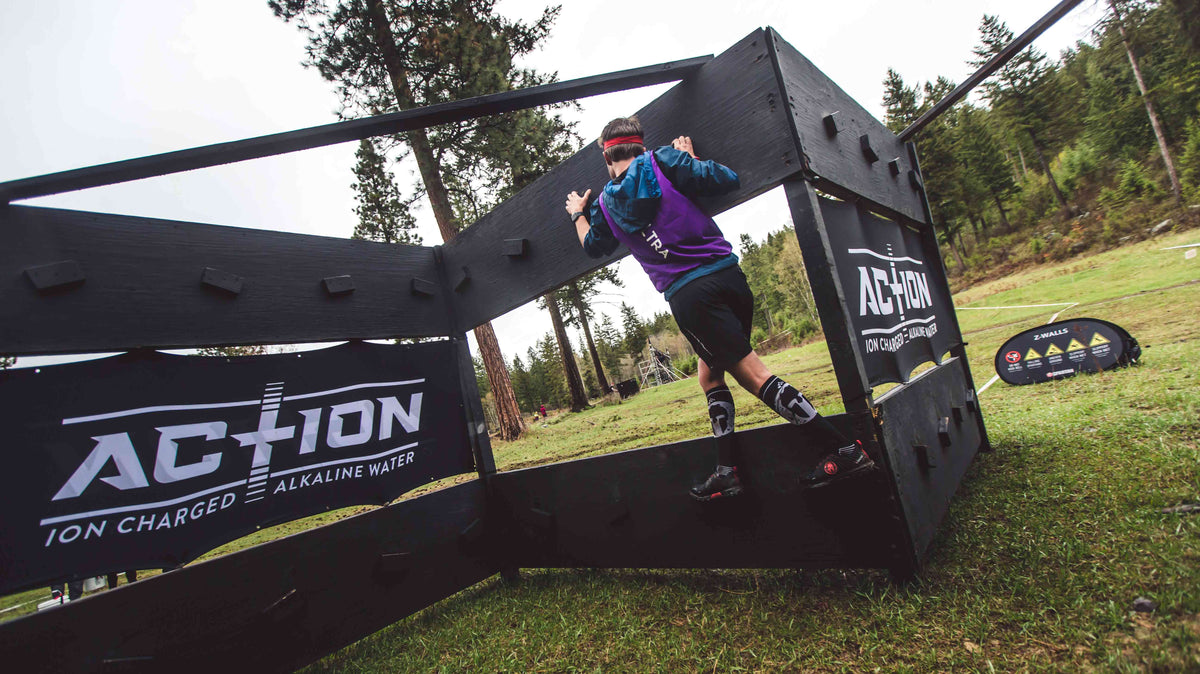How to Traverse the Spartan Z Wall Obstacle in 4 Simple Steps

The Spartan Z Wall is a horizontal bouldering obstacle made up of three walls angled in a “Z” formation with two-by-four blocks of wood attached. You step on and grab these blocks while moving horizontally across and around corners to ultimately ring the bell. Each wall is approximate eight-feet wide, and you cannot touch the ground.
While that may or may not sound easy enough, it can quickly get complicated when your grip strength is shot, your hands are wet, and — worst of all — the walls sit on a mountainous angle, forcing you to lean back and hold on for dear life.
MORE:
To save you from doing 30 burpees, here's how to successfully traverse the Spartan Z Wall.
How to Traverse the Z Wall Obstacle
This common Spartan race obstacle requires grip strength, mobility, and coordination. Racers who fail it often aren't gripping correctly, position themselves too far away from the wall, have poor foot placement, or tense up and forget to just relax.
Finger, hand, and forearm strength is a big part of this obstacle. In your training, focus heavily on grip-strength exercises, like towel pull-ups, farmer carries with heavy dumbbells or kettlebells (for an added training option use a towel through the kettlebell handles), pinch-grip plate carries, and deadlifts.
You will also need shoulder strength to hold your body up, so add in dead hangs for time, working up to a 1-minute hang.
Related:
Here's how to traverse the Z Wall without fail:
1. Get Your Warm-Up Right
You'll need to externally rotate your hips while traversing the wall, so working on the frog stretch in your warm-up to open up your hips.
2. Choose the Right (or Left) Wall
Whichever hand you are most dominant with, lead with that side. Search for the least used and least muddy wall facing in that direction (ie. if you're leading with your right hand, choose a wall that is facing toward the right). Also, be sure to check out the grade of the slope and choose a wall that isn’t leaning too much to that particular side.
3. Perfect Your Hand Placement
Cup your hands and place them on the outside edges of the blocks rather than grabbing the blocks on the front with your fingers. This outside placement allows you to stay close to the wall and “swing” a bit. Once your grip is solid, shuffle-step your feet over, and then move your hands to the next block.
4. Keep Your Hips Close to the Wall
As you traverse the wall, really try to keep your hips close to the wall (especially as your go around a corner). Turn your toes out so that they are pointing in opposite directions to help you stay on the blocks as you make your way to the bell.

